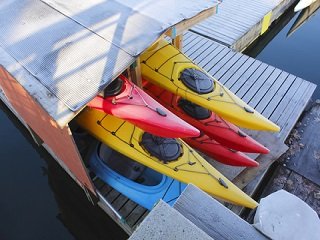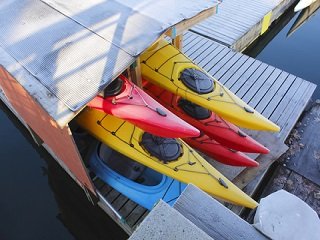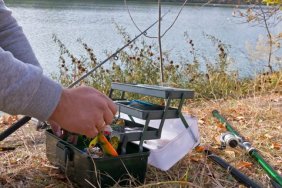 While outdoor gear is designed to withstand some of the toughest conditions on the planet, it can still degrade without proper care from you. One such piece of equipment that requires some TLC now and then is your kayak. Knowing how to properly store your kayak when you’re not using it is a vital part of owning one, and today I’ve provided you with some tips on how to store your kayak the right way.
While outdoor gear is designed to withstand some of the toughest conditions on the planet, it can still degrade without proper care from you. One such piece of equipment that requires some TLC now and then is your kayak. Knowing how to properly store your kayak when you’re not using it is a vital part of owning one, and today I’ve provided you with some tips on how to store your kayak the right way.
Protecting your kayak from the elements is a crucial factor when it comes to storing it. Sunlight, for instance, can wear down just about any kayak hull material, from fiberglass to plastic to coated fabric. To prevent this from happening, store your kayak in an area out of direct sunlight, such as your house or garage. If that isn’t possible, due to a lack of space, then try to find a shaded spot.
If shade is limited or not available, find a weather-resistant tarp that will cover the entire hull at all times of day to cover your kayak. Try to suspend the tarp above the hull, as direct contact can lead to mold or fungal growth in wet conditions. If you do end up storing your kayak outside, make sure rain and snow can’t collect in the tarp and press down on the hull. Also, prolonged exposure to cold can damage the fabric skins used in certain inflatable kayaks, so consider making room indoors if you endure harsh or long winters. Repeated freezing and thawing can cause damage to fiberglass boats if water has seeped into any seams, joints or cracks in the hull. This water will expand and contract as the temperatures change, which can cause further damage.
If you use your kayak predominantly in saltwater, you’ll have some extra precautions to consider. Saltwater can degrade hull materials and corrode metal parts, so if you paddle in salt water, be sure to rinse your boat thoroughly with fresh water before you store it.
You can also use sun-protective sprays, like McNett UV Tech, which can be applied to hard-shell boats to enhance their UV protection. Apply a good coating at the beginning of each season, as well as prior to storing your boat for any long period of time to help shield it from sunlight and oxidation. If you own an inflatable kayak, keep it disassembled and indoors when storing it for long periods of time.
The elements can wreak havoc on your kayak if you don’t take measures to protect it. Considering the weather, your region, and the materials used to make kayaks will help prolong the life of your own each season. Be sure to return for Part Two, where we’ll explore the importance of weight distribution when storing your kayak.








